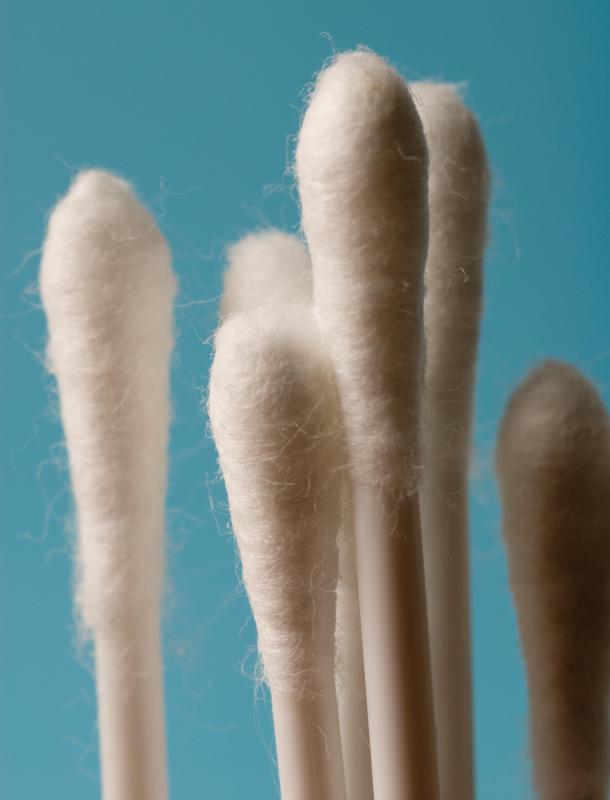At TheHealthBoard, we're committed to delivering accurate, trustworthy information. Our expert-authored content is rigorously fact-checked and sourced from credible authorities. Discover how we uphold the highest standards in providing you with reliable knowledge.
What Is a Swab?
A swab is a small stick with a patch of foam, cotton, or similar material mounted on one end. Swabs are useful for a variety of medical procedures like taking samples for culture or applying medication to mucous membranes. Numerous manufacturers produce a range of designs for medical use, and doctors can custom order swabs for particular purposes. Some products are readily available at drug stores; many homes, for example, have a small box of loose cotton swabs for cleaning out the ears.
Some swabs come in a loose package and are not sterile, although they are clean. It is also possible to buy individually packaged products sealed in plastic. These are useful for taking samples, as the physician does not want to use a contaminated tool for this purpose. The doctor can open the package and swipe the swab along an area of interest, like the inner cheek for a DNA sample or the surface of a skin infection for a microbial culture. The sample goes back into a sealed container for analysis in a laboratory.

Medicated swabs are also available. Patients can use a clean cotton swab for a task like applying a medicated cream, or they can buy a specially made swab. It usually has a breakable rod inside that the patient snaps to release a dose of the medication into the tip. It can be applied topically to treat infection, inflammation, or other issues. Some drugstores carry topical swabs for cold sores and minor cuts and scrapes, and others are available by prescription only.

Another use for a swab can be the gentle manipulation of tissue so a doctor can examine it. The hands may be large enough to obscure what the doctor is trying to see, and she can use the tool to gently push or lift the tissue without handling it directly. In cases where the doctor needs both hands free, an assistant can handle the swab as directed. Larger absorbent swabs are available for cleaning out fluids during medical procedures like lancing an abscess.

The material used in swab construction is usually hypoallergenic, and patients should not experience contact dermatitis when a doctor uses a swab. With medicated swabs, there can be a risk of reacting to the medication. Patients with a history of allergies should discuss this with a doctor or pharmacist before accepting a prescription. The doctor can determine if the medication is safe and prescribe an alternative if it appears to be necessary.
AS FEATURED ON:
AS FEATURED ON:

















Discussion Comments
I didn't realize that Q-tips were also called swabs. I always associated the word swab with the small sample of genetic material that a doctor will take sometimes, probably because they use that term in doctor and crime shows all the time. They usually tell someone to take a cheek-swab and I remember doing the same thing in high school when we were looking at cells under a microscope.
Actually, now that I think about it, we probably did use cotton swabs to take our samples of cheek cells.
@pastanaga - Well, even if you can't use them for cleaning your ears, there are plenty of other things you can use them for.
I tend to use them a lot in arts and crafts, particularly for face painting, as they are a bit easier to use for the fiddly bits than a brush.
They're pretty good for cleaning keyboard keys as well, if you dip them in cleaning alcohol first. Foam swabs are even better if you can find some (they seem to be a bit rarer than the cotton ones).
Cotton swabs are actually a really terrible way of cleaning the ears. You can use them for the outside of the ear if you must, although I think a cloth does just as well, if not better, but don't stick them into your ears.
My sister works as an audiologist and she's told me she often sees people come in with hearing loss because they basically shoved all the wax deeper into the ear with a pointed cotton swab.
Ideally you just use a couple of drops of oil, but if you must use an instrument it's better to use a tiny scoop (you can get them at pharmacies) which will actually pull out the wax instead of sending it deeper.
Post your comments